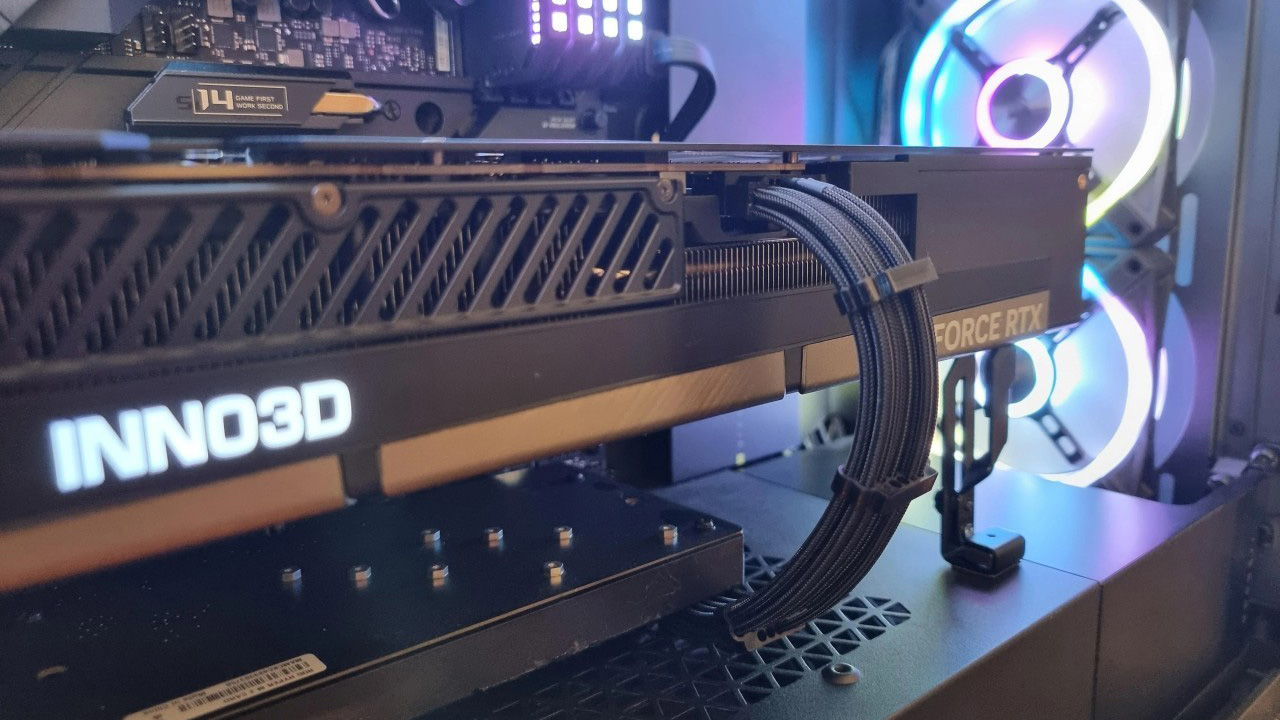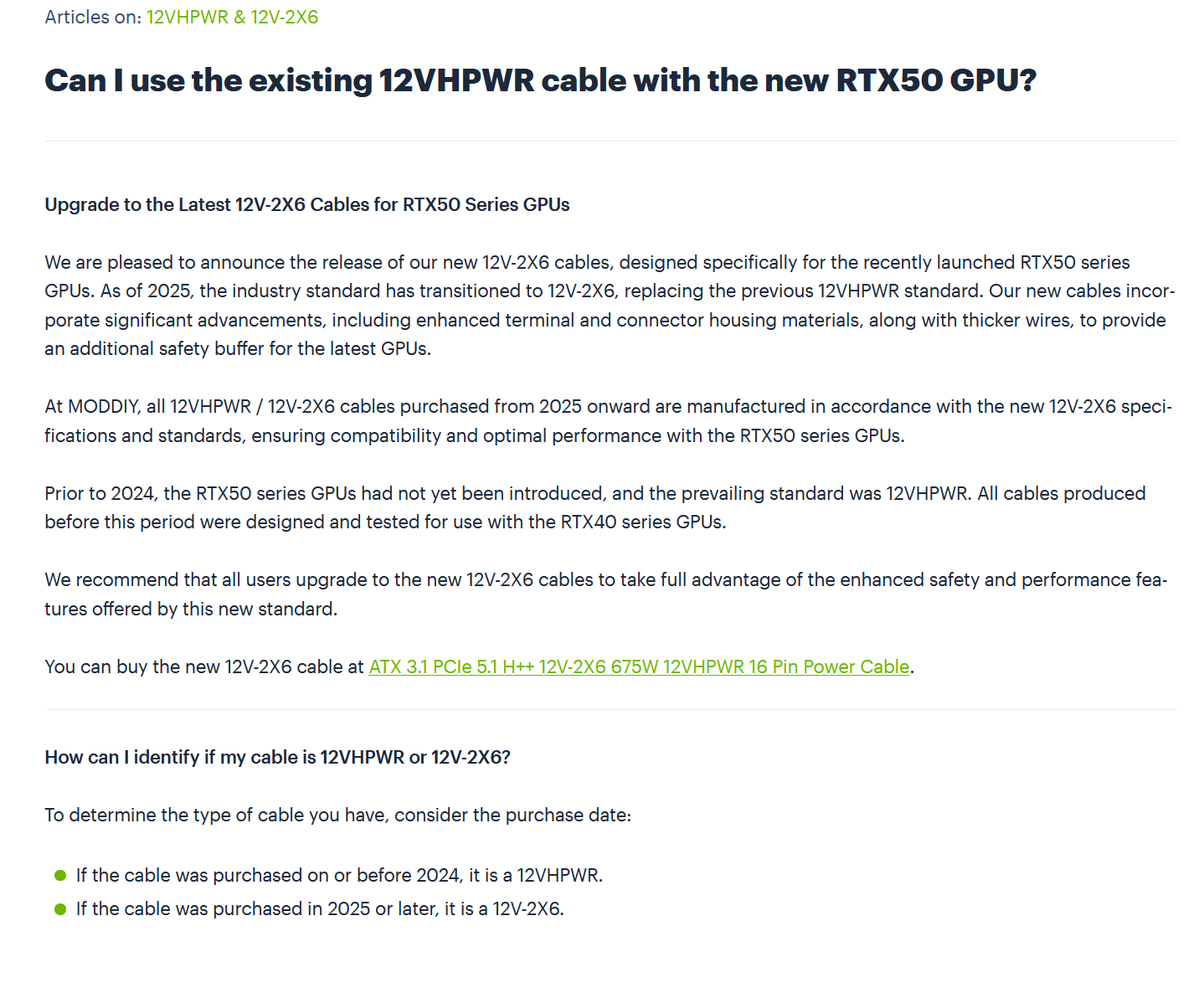Cable maker advises against using old 12VHPWR cables with RTX 50-series GPUs
Moddiy warns users not to use its 16-pin cables made in 2024 or earlier on RTX 50-series graphics cards.

After one of its cables was blamed in the first credible report of an RTX 5090 power connector melting, third-party power supply cable maker Moddiy has warned RTX 50-series (Blackwell) GPU owners not to use its old 12VHPWR custom cables made before 2025 with Nvidia's latest Blackwell GPUs. In a support page detailing the matter, Moddiy says that all of its cables made in 2025 have been validated for the RTX 50-series, but the 2024 and earlier cables are another matter.
Moddiy's 2025 cables have been upgraded to cope with the higher power requirements of the RTX 50-series, specifically the RTX 5090 and RTX 5090D. Its new 2025 cables reportedly incorporate "significant advancements," such as enhanced terminal and connector housing materials and thicker wires. These changes have been made to provide an additional safety buffer and prevent accidents.
The new 2025 cables are also manufactured according to the latest 12V-2x6 specification. Older cables made in 2024 or earlier were based on the original 12VHPWR standard.
The support page provides a listing of new cables with RTX 50-series support that Moddiy is producing. The new cable has all the bells and whistles, sporting ATX 3.1 and PCIe 5.1 support, a 675W power rating, and a 12V-2x6 specification. Critically, it has the latest "H++" moniker, the identification for cables boasting the upgraded 12V-2x6 power spec. Cables featuring the "H+" identification were designed with the older 12VHPWR power spec in mind.

The new adapter cable has three 8-pin input connectors that merge into a single 12V-2x6 connector on the other side. This cable is designed for older power supplies that don't have a dedicated 12V-2x6 connection and allows users to ditch (or at least not user) any adapters that Nvidia and its partners ship with RTX 50-series GPUs.
The transition to the 12V-2x6 standard (on the cable side) should help eliminate any potential damage caused by the high power draw of power-hungry RTX 50-series GPUs such as the RTX 5090. The 12V-2x6 standard is nothing new; Nvidia began transitioning its GPUs to the spec as early as 2023, starting with the RTX 4070 and RTX 4090. However, the higher power draw of the RTX 5090 is now a big enough reason for cable makers like Moddiy to recommend only using the newer 12V-2x6 standard on the physical cables themselves.
Concerns over the possibility of the RTX 50-series 12V-2x6 power connectors overheating and causing them to catch fire increased when the first credible report of an RTX 5090 FE with a melted connector appeared online. The culprit was allegedly Moddiy's third-party cable, which was only rated at 600 watts and was previously used on an RTX 4090.
After the incident, German overclocker and PC enthusiast Der8auer ran his testing. His tests revealed that a RTX 5090 cable overheated up to 150C on some wires due to uneven power distribution on all cables. However, system integrator Falcon Northwest states that it has not been able to replicate the melting issues seen from Der8auer or the initial report that set all of this in motion.
Our take: Use a 12V-2x6 cable. It's that simple. While 12VHPWR is physically compatible with the 12V-2x6 socket, and vice versa, there's no good reason to risk using a cable with the older specification on a new GPU, particularly on the RTX 5090 that has a base MSRP of $1,999 but currently sells out virtually instantly and has prices of $5,000 and more on places like eBay.
Get Tom's Hardware's best news and in-depth reviews, straight to your inbox.

Aaron Klotz is a contributing writer for Tom’s Hardware, covering news related to computer hardware such as CPUs, and graphics cards.